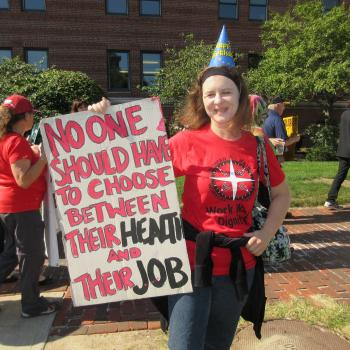Many economists, including Paul Krugman, are worried about the stimulus package. They see it as too timid, and too tilted toward tax cuts that tend to have much smaller multipliers (and maybe even smaller in the current uncertain environment when people are more likely save and run down debt). This might be true. I think the more interesting debate, however, relates to be various proposals to kill to two birds with one stone– do a massive expansion in spending to get the economy moving again, and leave something good behind. I want to briefly touch upon two issues in the post: health care and the environment.
Some have been arguing that health care reform should be front loaded: spend upfront, and relieve the mounting cost pressures from health care along the way. A win-win situation. Jacob Hacker has made a convincing argument here:
“Despite widespread complaints about “overinsurance,” the amount people pay for health care out of their own pocket has risen substantially as a share of personal income over the last generation, and especially in the last decade. The Commonwealth Fund recently completed two massive surveys showing that the proportion of adults younger than 65 with health insurance who spent more than 10 percent of their income on health care out of pocket (5 percent for low-income adults) skyrocketed from 13.8 million in 2003 to 21.8 million in 2007, as health plans hiked deductibles and co-payments, denied claims more aggressively, jacked up costs for out-of-network care, and so on. What’s more, almost all of the increase occurred among families with higher incomes–meaning that high health care costs have become a standard deduction for the middle class.
The problem is, of course, far worse for those who lack health insurance. Indeed, if you add the ranks of the uninsured to those without adequate coverage, you have more than 40 percent of the working-age population in an immediate economic bind because of medical costs. About half these people–slightly more of the uninsured than the underinsured, but not much more–report severe problems paying their medical bills. These are the families accounting for the 40 percent to 50 percent of people in bankruptcy or foreclosure who say health care is the number one reason for their plight.
So fixing health care isn’t just a recipe for better access to medical care. It’s an immediate economic lifeline for working families, giving them back part of their income to use on other things. It’s also a rescue package for state and local governments burdened by Medicaid and S-CHIP, for doctors and hospitals who treat the uninsured and inadequately insured, for community institutions that help people in distress–in short, for all the rapidly fraying threads of our health care safety net. Put simply, most of the money we spend upgrading coverage and spreading it to the uninsured is going to go directly into the pockets of people who need help now.”
John Judis makes a similar argument on transport: we need to move away from automobiles and towards more environmentally-friendly public transportation. But given America’s poor starting point, such an effort will entail huge costs. Judis points to one area in particular: high speed trains, where the United States remains in the dark ages next to the rest of the world. Judis:
“One area that is ripe for such investment–and that is not, from what I have seen, a declared priority of the Obama administration–is high-speed rail. Amtrak’s Acela trains–the closest thing we have to one–average less than 100 mph between Washington D.C. and Boston, whereas trainsin Western Europe and Japan go more than twice as fast. Many of them also run on electricity. They would be the most energy-efficient and quickest means of getting between places like Boston and New York, or Los Angeles and San Francisco. But they would require a massive investment. For instance, installing high-speed rail in the Northeast corridor could cost about $32 billion, while California’s high-speed rail system would require up to $40 billion. A system that would address the other areas of the country could easily raise the cost to the hundreds of billions. The House transportation and infrastructure committee has currently proposed $5 billion in stimulus funds for intercity rail–not even a down payment on what it would cost to convert the U.S. to high-speed rail.
Investing in high-speed rails would be very expensive, but unlike tax cuts–the benefits of which can be siphoned off in the purchase of imported goods–the money spent would go directly to reviving American industry and improving the country’s trade balance. That doesn’t just mean jobs creating dedicated tracks or new rail stations: Though the U.S. abandoned train manufacturing decades ago to the French, Germans, Canadians, and Japanese, this kind of production could be undertaken by our ailing auto companies or aircraft companies–ifthe federal and state governments were to place orders. And building trains that would run on electricity would be a paradigmatic example of the “green jobs” that Obama often touts.”
I would love to see real high-speed trains on the east and west coast corridors, and even a New York-Chicago line. This would surely discourage people from driving and flying. People like trains. There’s a certain romanticism about them. Americans shy away from trains today not so much because they are addicted to gas-guzzling behemoths (though this may be a factor) but because the current options are so lousy.
So, we should think big. If we can get the economy moving again while making a serious dent in the health care and energy crises– well, that would certainly be worth the cost.












